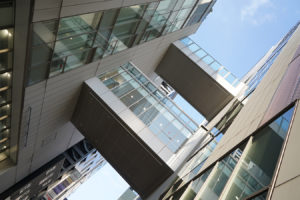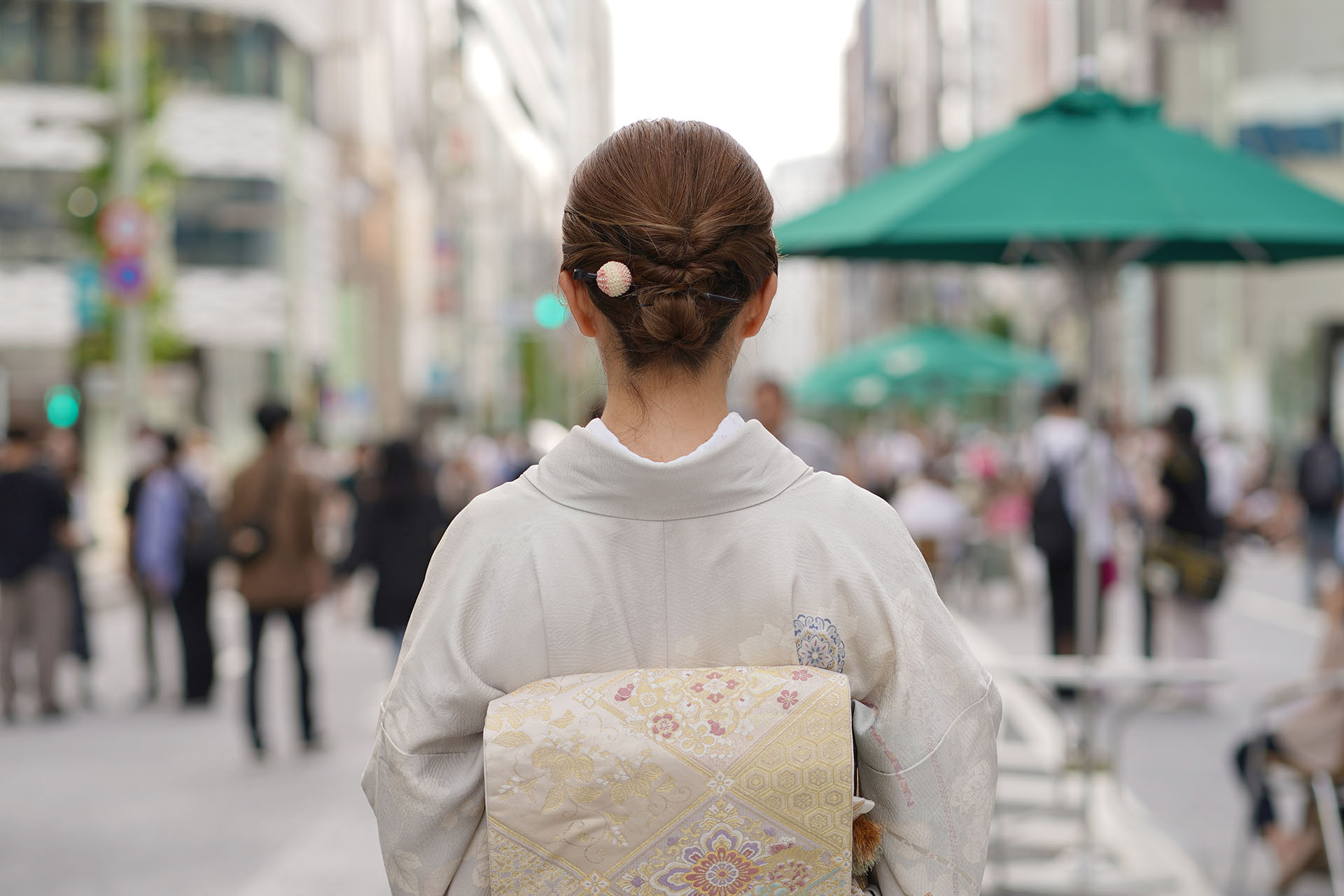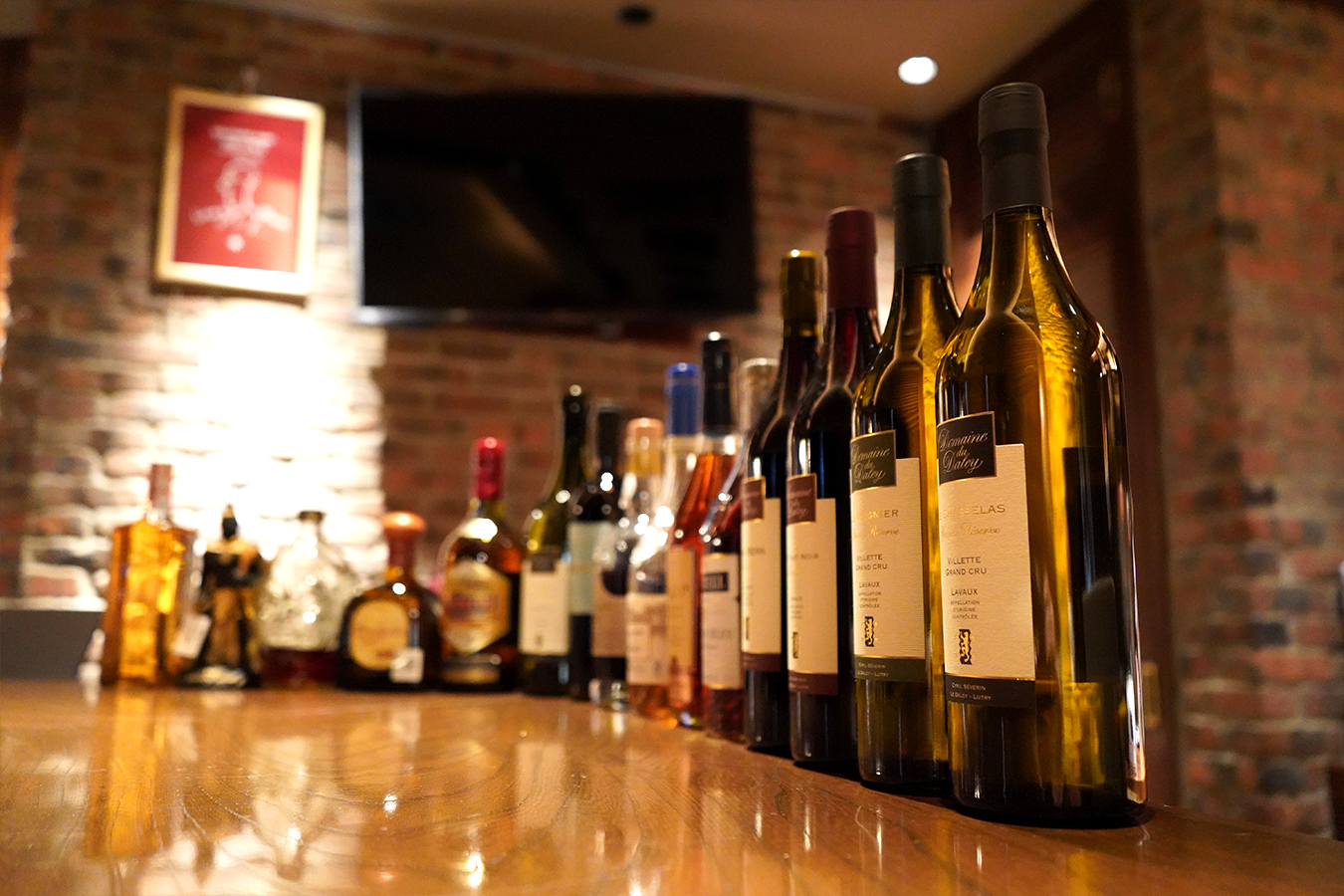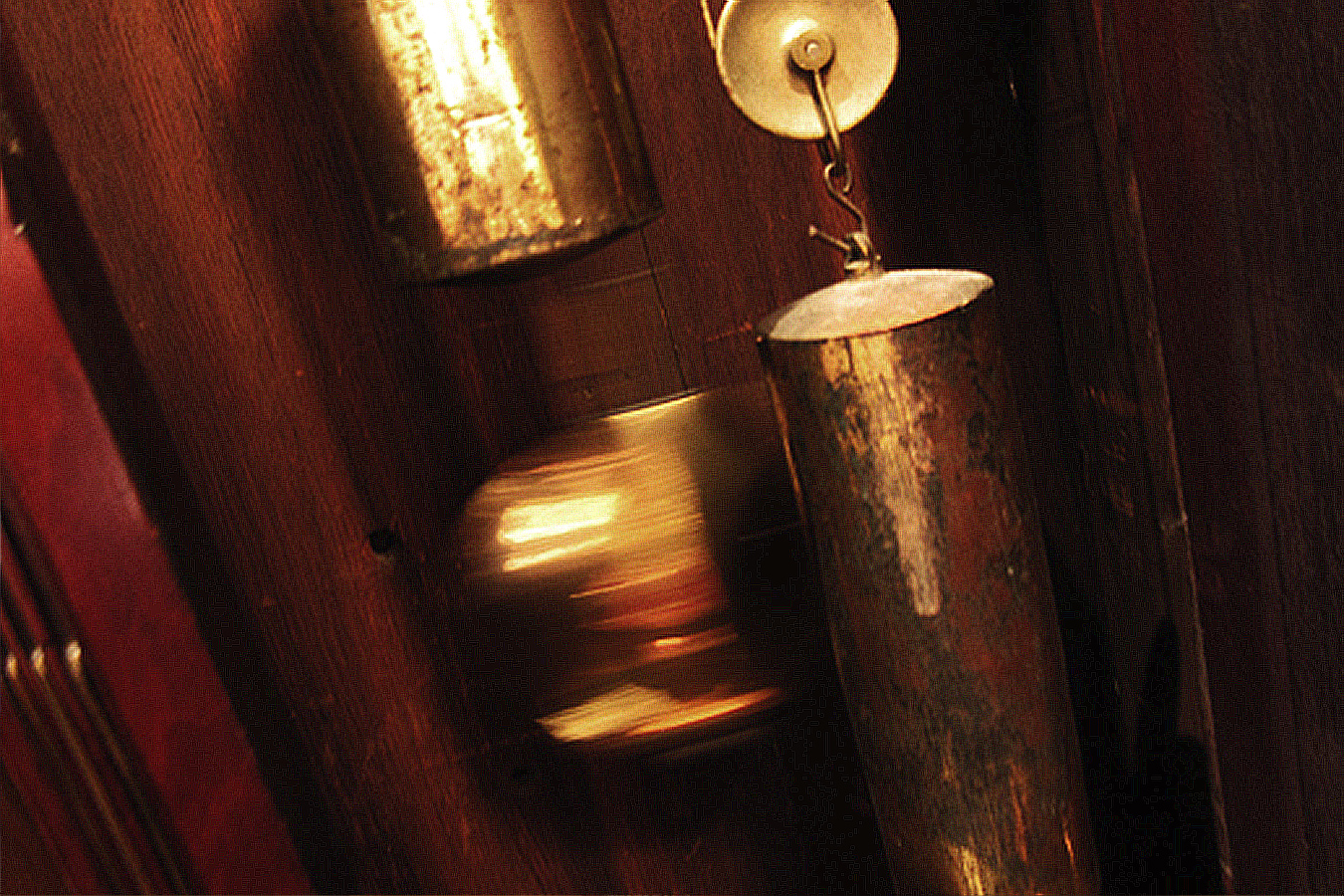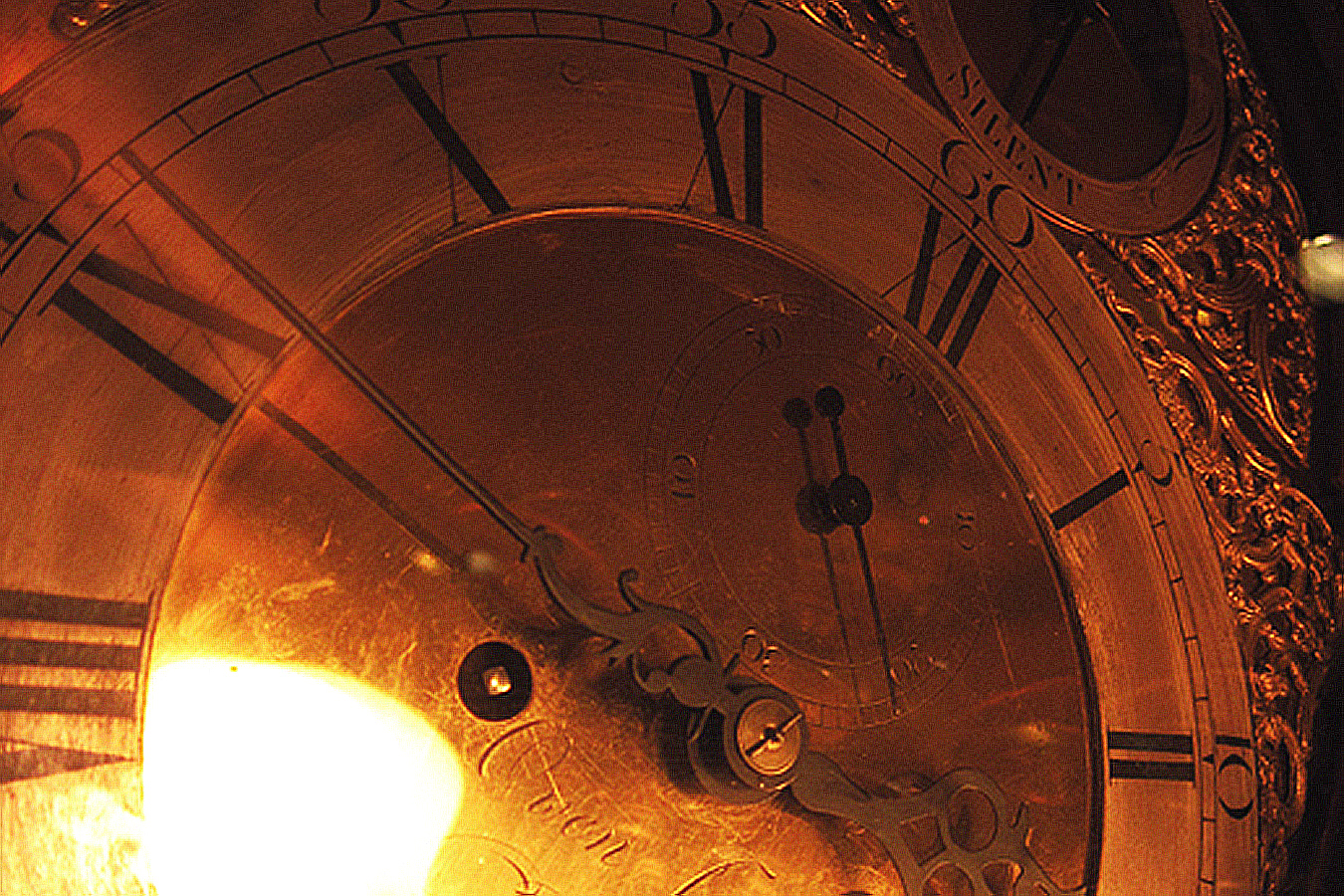A “Shrine in the Sky,” where you can rest and take in the refreshing air
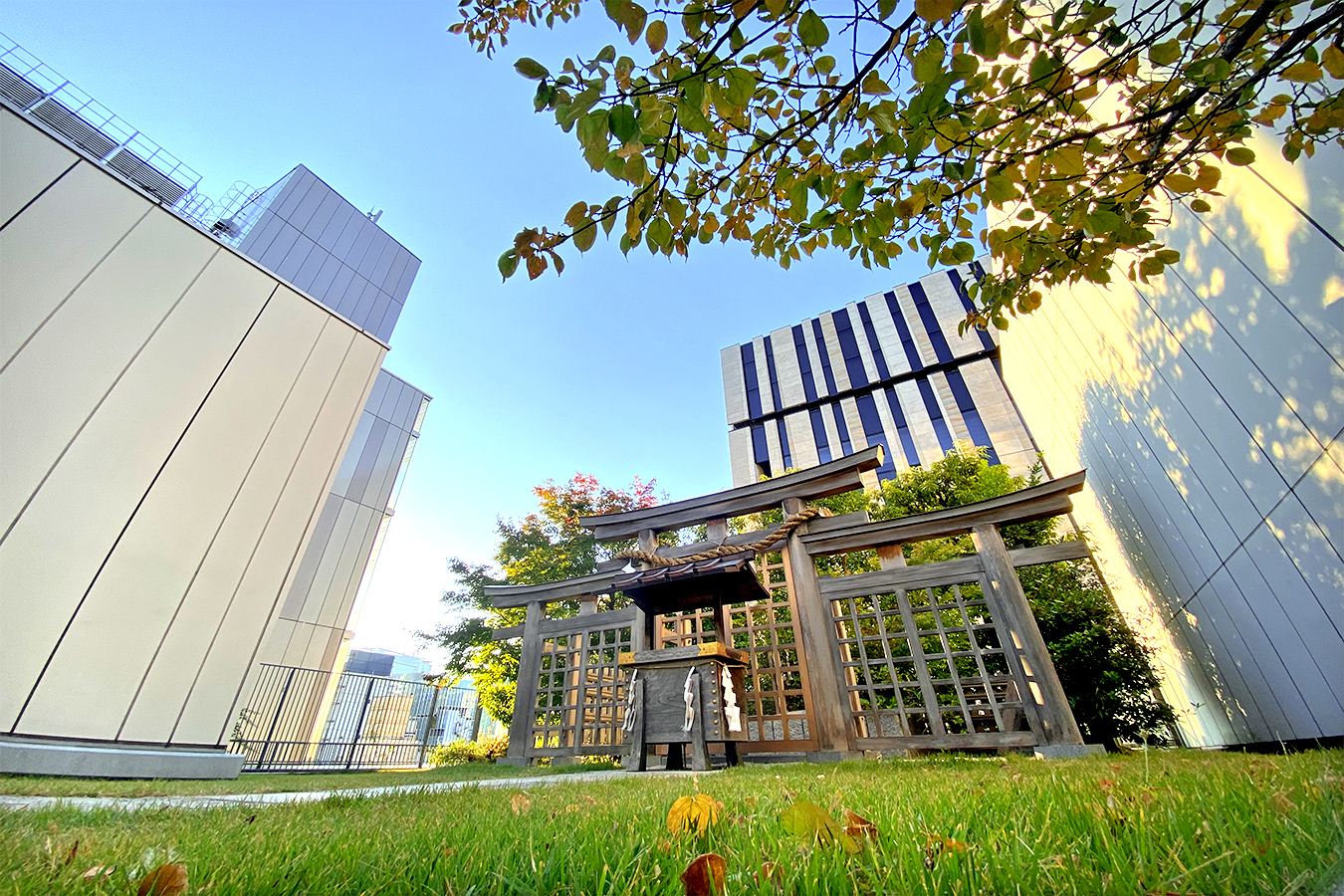
From the seventh floor of Ginza Komatsu West an external stairway leads upwards to a rooftop garden. We have put in grass and made a walkway in this sunny area to encourage people to stroll here. In one area, a shrine we used to call Ginza’s “shrine in the sky” (Tenku Jinja) during the Komatsu Store era now stands in renewed form.
When planning out the shrine and rooftop garden, in accordance with the tradition of the emperor standing facing south, we placed a sacred iwakura stone on the northern side of the rooftop site and made three torii gateways, representing the three torii gateways of Omiwa Shrine. For the torii gateways, which symbolize the spiritual kekkai barriers separating the secular world of man from the precincts of a Shinto shrine, we used the wood of three hundred year-old Japanese Kiso cypress trees from Mt. Ontake, which is also used when rebuilding shrines at Ise Shrine.
Reflecting the fact that Omiwa Shrine is considered to be the whole of the mountain known as Mount Miwa, behind the torii gateways we have encircled the iwakura stone with Japanese nagi trees, sakaki trees, and mokkoku trees.
Since the Vermilion Bird (Chinese phoenix), one of the four mythological creatures in Chinese astrology, is known as the protector of the south, we planted moso bamboo and paulownia trees on the southern side, commemorating the story of the phoenix, which is said to have lived in a bamboo forest eating the fruit of the paulownia tree.
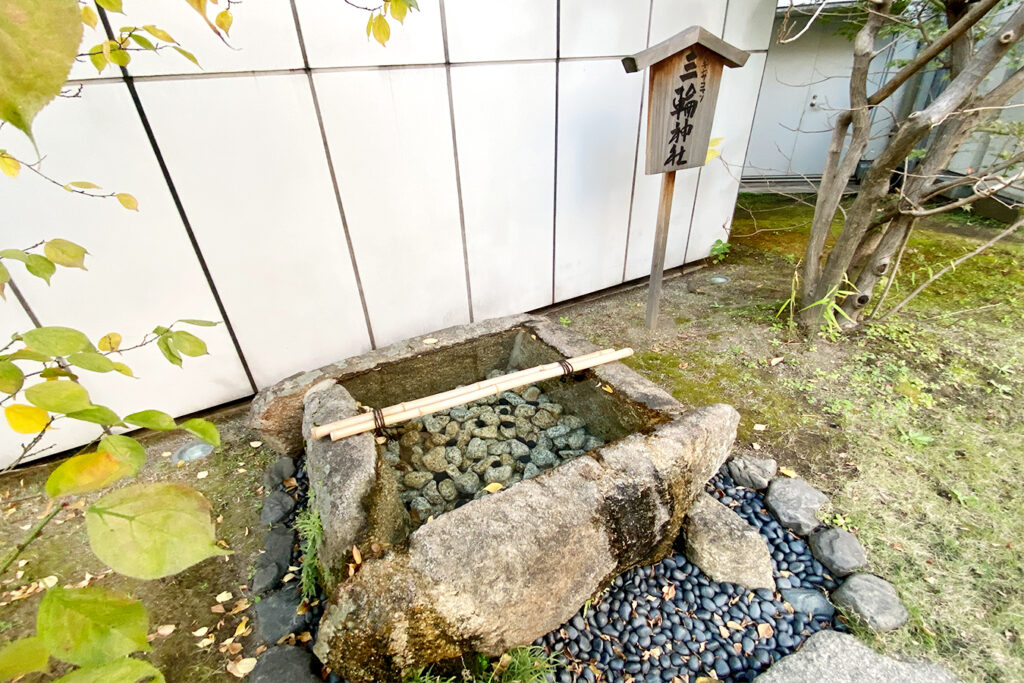
We built the approach to the shrine together with the children of the local Taimei Elementary School in the traditional way, using Fukakusa soil from Fushimi in Kyoto, which is thought to be best for making hard-packed dirt floors.
In the sense that it links tradition with the future, we feel sure that it is significant, if only in a small way, that we were able to make something that can withstand wind and rain by compacting it by hand using only natural materials—earth, nigari powder (the coagulant used when making tofu), and lime—and that we accomplished this together with children on a roof in Ginza in the center of the Tokyo metropolis.
In front of the approach to the shrine, on the east side, we also made a chozuya (pavilion for ritual washing of the hands), fashioning it in the form of a square well surround in a parallel cross pattern using taikoseki stone from Kyoto’s Mt. Daimonji, known for the Gozan Okuribi (Daimonji Bonfire) festival held in summer.
On either side of the well, we planted a plum tree with red blossoms, which is thought to have a purifying effect on water, and a paper mulberry tree, the leaf of which features as the symbol on the crest of the Kosaka family that runs Ginza Komatsu.
Many commercial buildings have shrines on their roofs, but although they are sacred places, the impression still persists that they are situated in obscure locations that are dark and run down.
Ginza Komatsu hopes that people dropping by the Ginza area will visit our shrine in the sky and enjoy it as a place where they can take a break on a rooftop open to the sky while admiring a variety of plants, as a spot where they can completely purify their feelings while being in the middle of the city.
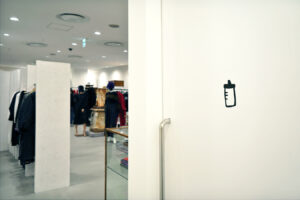
Creating a convenient environment that welcomes all shoppers
New creature = New building: nhale and exhale
